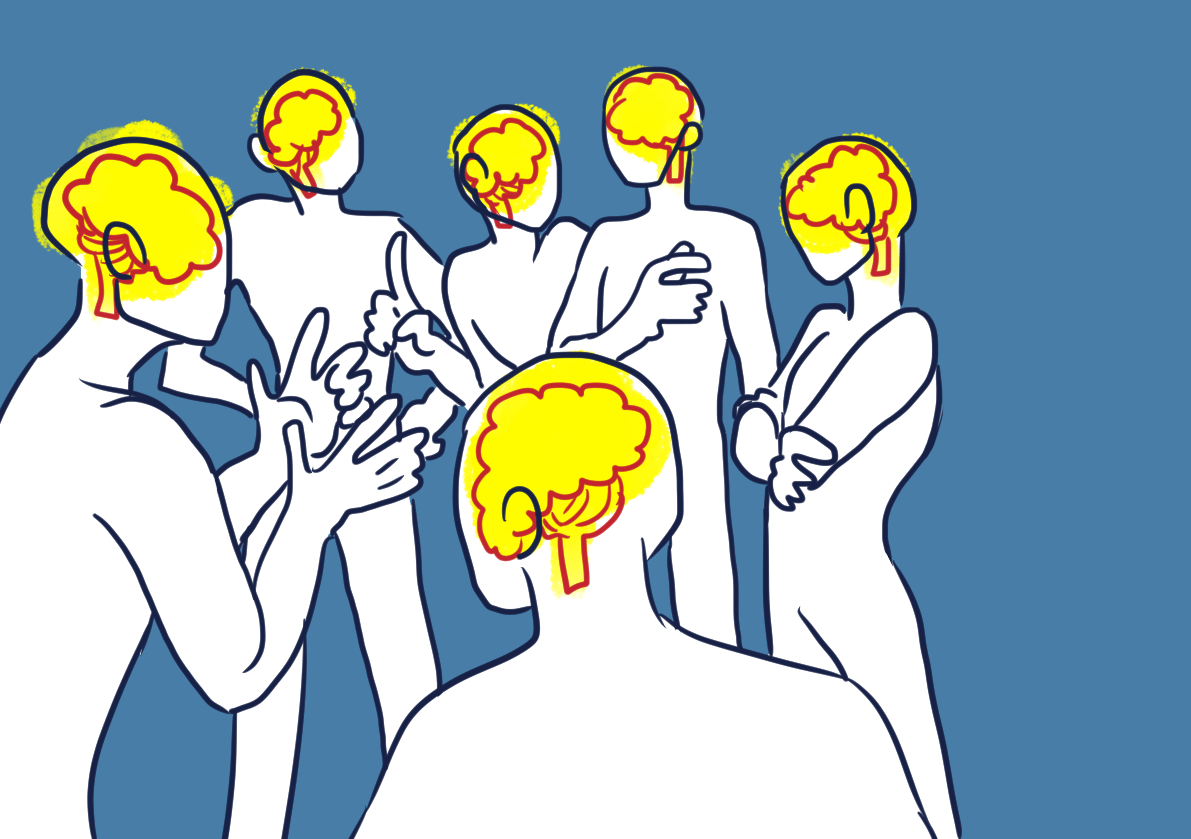People are a priority
A lot of what concerns the brain is other people.
Humans are social primates. Like gorillas and chimpanzees, we live in groups. There are families, friends, enemies, who’s in who’s out, who’s the boss. Social primates have the largest cortex relative to their body size across mammals. Humans have the largest cortex of all mammals, relative to the size of their brains. Across social primates, the larger the social group in which the primate lives, the larger its species’ cortex. This suggests that we have a big cortex to deal with the complications of interacting with the other members of the social group, be they partners, family members, friends, or rivals. Who did what to whom? Who knows about it? What should I do about that?
Anyone who has spent Christmas with their extended family will be unsurprised by this.

Many systems contribute to processing ‘people’ information in the brain. 1 The visual system has specialised pathways for recognising human faces, including the facial expressions and direction of eye gaze. As Robert De Niro snarled, “are you looking at me?” It’s something we’re bothered about.
The visual system is also tuned to recognise movement that comes from people rather than objects (so-called ‘biological’ motion), including the gestures people make when they communicate. Multiple aspects of sensory information (form, location, motion) are brought together to allow us to recognise other people from different angles, in various places, and while they are in motion. The auditory system has specialised pathways for processing human speech sounds separate from other environmental sounds. The motor system allows us to speak to other people, to hug them, wrestle with them: all social motor actions. The limbic system generates emotions around social interactions, be they the bonding of child to parent, the approach–avoid decisions around possible friends and enemies, attraction, maintenance of personal space and defence of resources and territory.
More complex systems allow us to verbalise our thoughts, emotions and intentions, as well as remember factual knowledge of actors in our social group. For example, the front of the temporal lobe develops social scripts through experience – who tends to do what to whom and how does that feel? And factual knowledge of actors in the social group – what do I think of Jonny and what does Jonny think of me? How does Jonny tend to behave? Where am I compared to Jonny in the social hierarchy? (Hey, I think I’m way cooler.)
As we grow up, we create links between different types of knowledge, experiences and actions. For example, the body sensation (or ‘somato-sensory’) system can detect needs and arousal levels in our bodies, such as thirst and excitement. We link the feeling of thirst to the intention of drinking and the action of picking up a bottle. So, too, in our interaction with other people. We learn social scripts, such as the custom that when you meet a new person you introduce yourself, try to remember their name, shake their hand, and ask how they are. You’re in France, do you greet with a kiss on one cheek or two cheeks? Isn’t it awkward when you get it wrong?
Putting these types of knowledge together, we can guess what other people may be feeling and what they will do next, based on our own experience. This is called mindreading or mentalising. If we see someone grabbing a bottle, the neurons that respond to seeing a bottle and those involved in the action of picking up a bottle will activate in our own brain: it doesn’t quite trigger the action itself but it helps us figure out why the person might be making that action: they’re thirsty.
Similar systems allow us to empathise with the feelings of others. We may link certain actions and facial expressions with, say, sadness in ourselves (crying, walking slowly). When we see others crying, we feel sad. We flinch when we see others in physical pain.
But even here, frontal brain systems come into play, dosing empathy with context. We only feel other people’s pain if we like them. The frontal cortex applies this logic to modulate the sensory or emotional pain we experience in sympathy with others. We feel the hurt of other people’s misfortunes more if we take their perspective. A region at the junction of temporal (facts) and parietal (space) lobes plays this role. In its fashion, the brain takes the act of perspective-taking quite literally – it involves spatial computations to see the world from another point of view: to distinguish our view from the other, our self from the other.
Finally, the frontal cortex must combine the context, its own goals, and emotional states to select plans and control sensory and motor systems, in order to behave in the right way in social situations. Don’t slurp your tea in polite company.
[1] Autism has often been understood in terms of poor development of the ‘social brain’, with particular struggles understanding other people’s intentions.